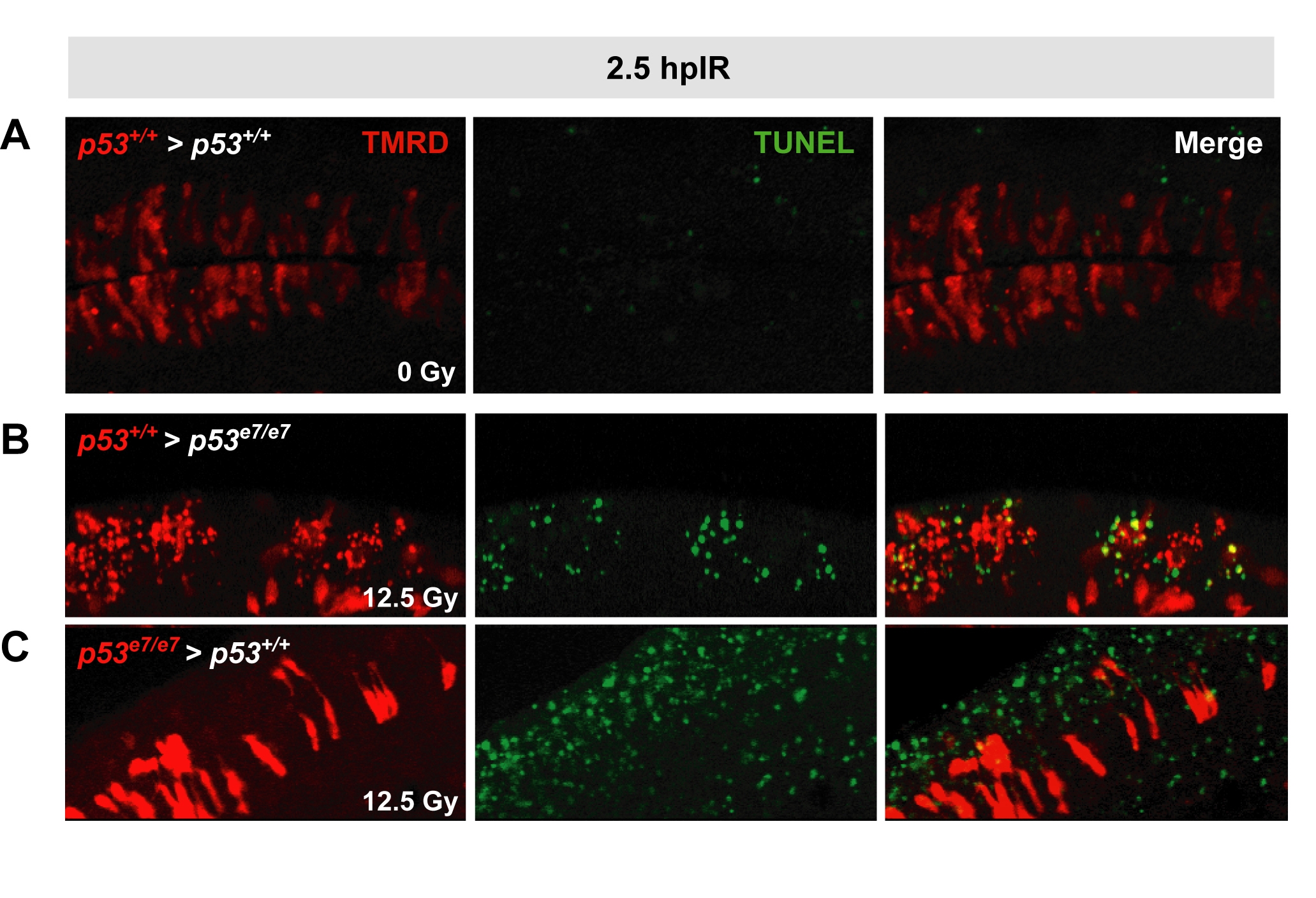Fig. S3
Validation of the cell transplantation assay
See Figure 3D for details on experimental procedure (cell transplantation and IR exposure).
(A) Dorsal view of a 5 μm thick confocal section of a p53+/+ spinal cord. TMR Dextran (red) marks cells from a p53+/+ donor embryo, which were transplanted at the blastula stage. TUNEL shown in green. The genetic chimera was not irradiated. Note that the transplanted p53+/+ cells do not stain TUNEL positive, showing that the transplantation technique does not induce apoptosis.
(B,C) 5 μm thick confocal sections of spinal cords in irradiated chimeras. TMR Dextran (red) marks the donor cells. TUNEL shown in green. (B), p53+/+ cells transplanted into a p53e7/e7 host. (C), p53e7/e7 cells transplanted into a p53+/+ host. Consistent with the fact that wild-type zebrafish embryos respond to IR through the cell autonomously-acting, mitochondrial apoptotic pathway (Berghmans et al., 2005; Kratz et al., 2006), p53+/+ cells transplanted into p53e7/e7 hosts stained TUNEL-positive after IR (86%, n=108) while neighboring p53e7/e7 cells remained largely TUNEL-negative (panel B). Furthermore, 86% (n=73) of p53e7/e7 cells transplanted into p53+/+ hosts remained refractory to IR-induced death, as indicated by their TUNEL negativity within an otherwise TUNEL-positive environment (panel C). Hence, TUNEL reactivity of transplanted cells after IR strictly depends on the p53 genotype of a cell, occurs irrespective of the cellular environment, and has very little, if any, influence on neighboring cells.
Reprinted from Cell, 133(5), Sidi, S., Sanda, T., Kennedy, R.D., Hagen, A.T., Jette, C.A., Hoffmans, R., Pascual, J., Imamura, S., Kishi, S., Amatruda, J.F., Kanki, J.P., Green, D.R., D'Andrea, A.A., and Look, A.T., Chk1 Suppresses a Caspase-2 Apoptotic Response to DNA Damage that Bypasses p53, Bcl-2, and Caspase-3, 864-877, Copyright (2008) with permission from Elsevier. Full text @ Cell

